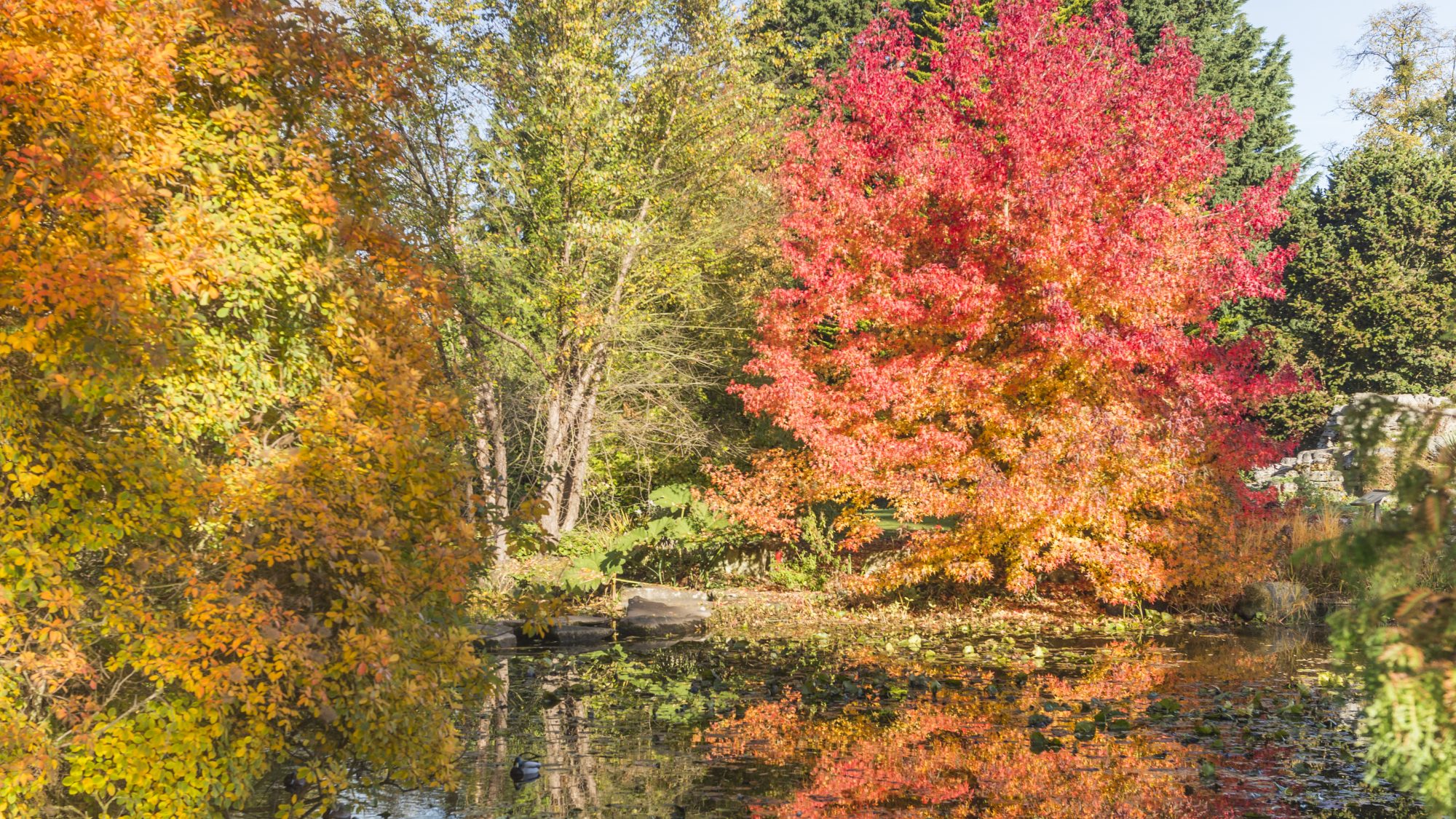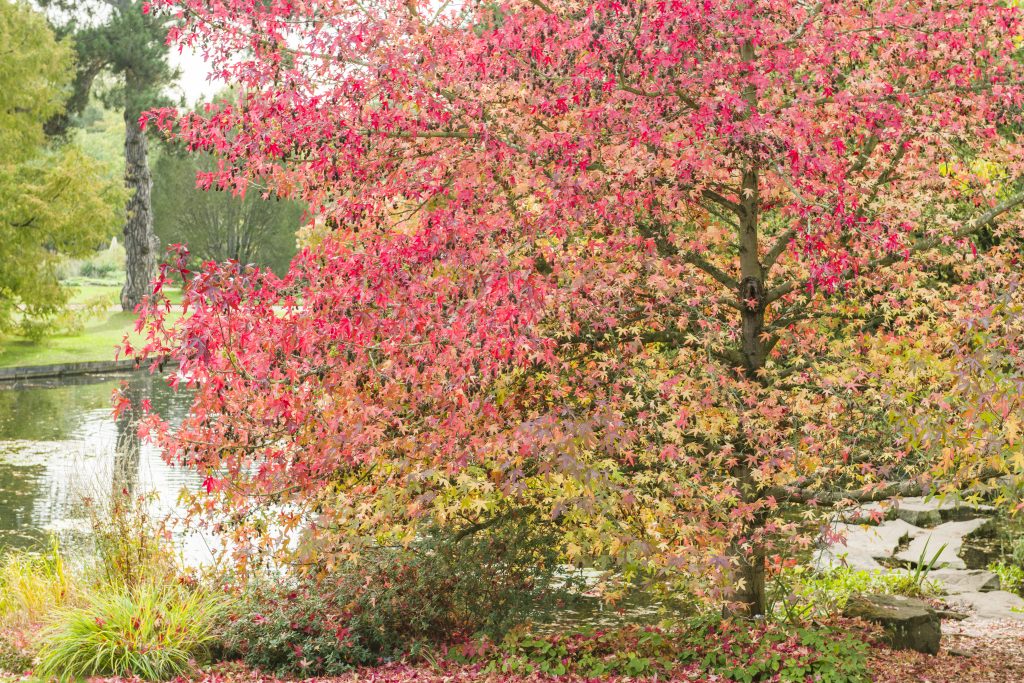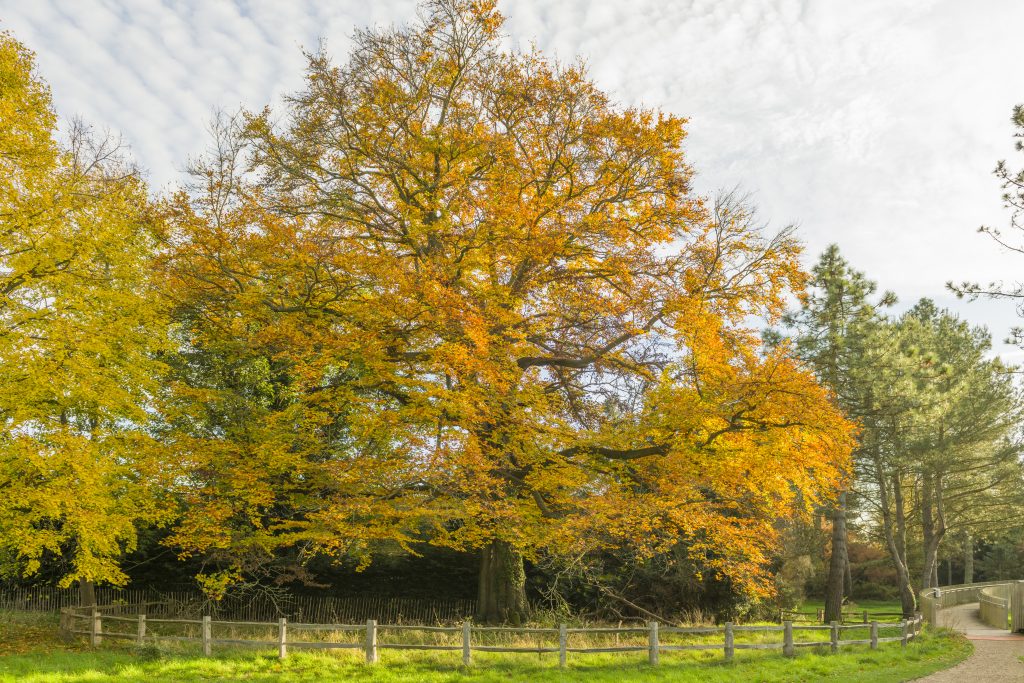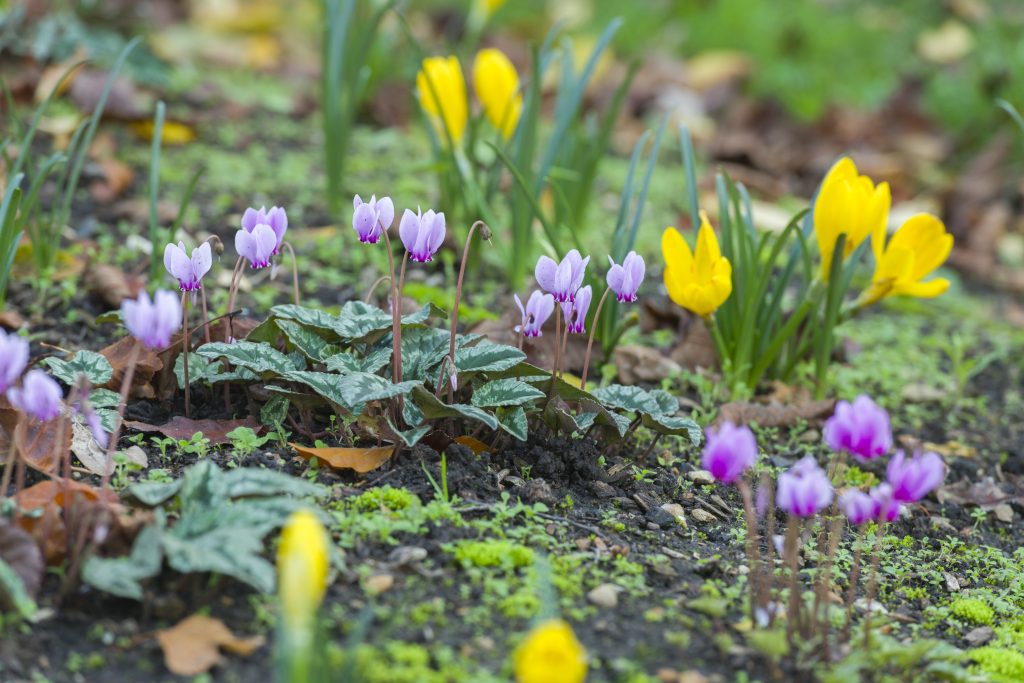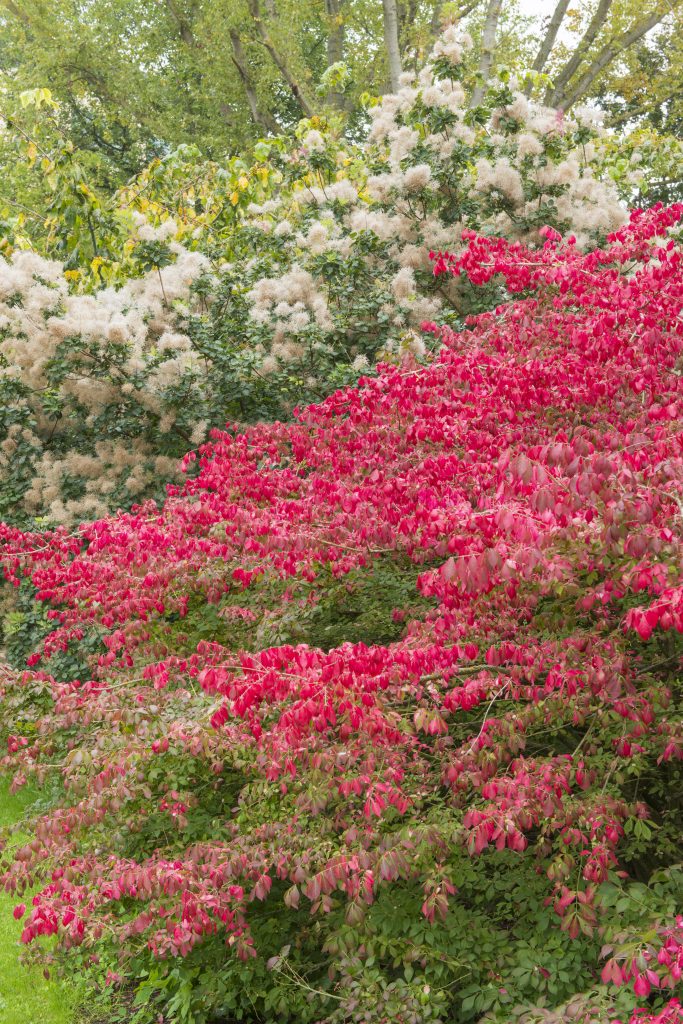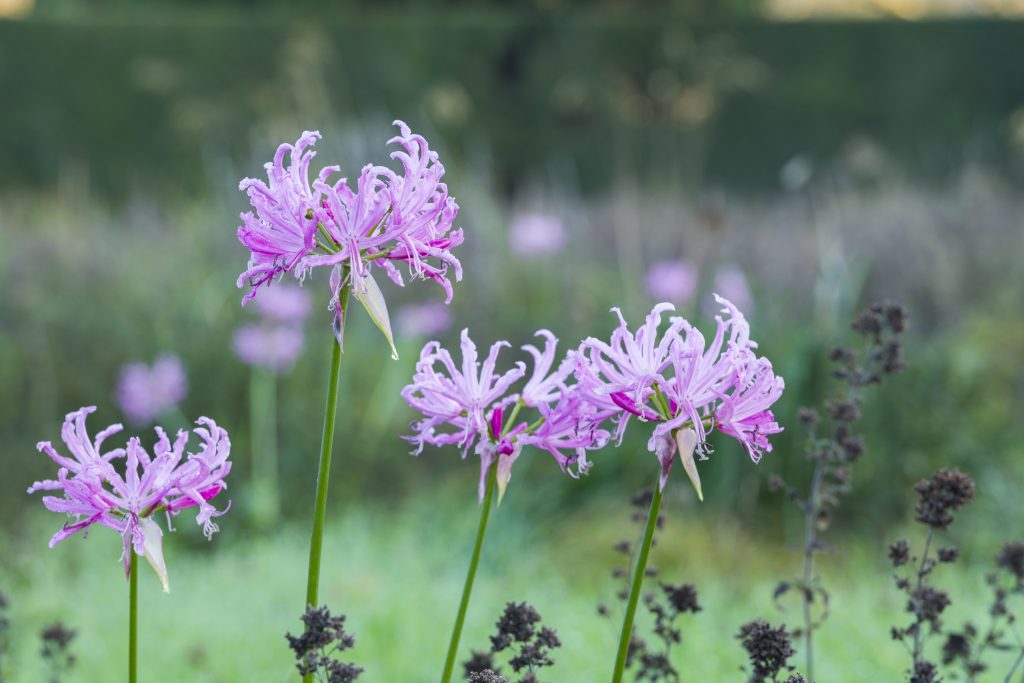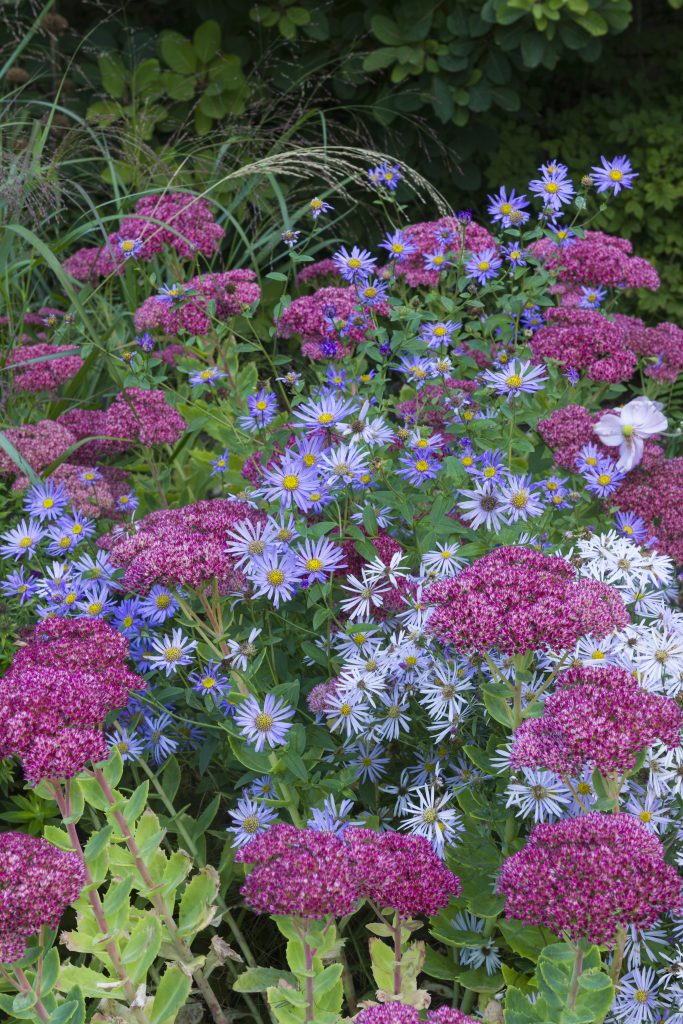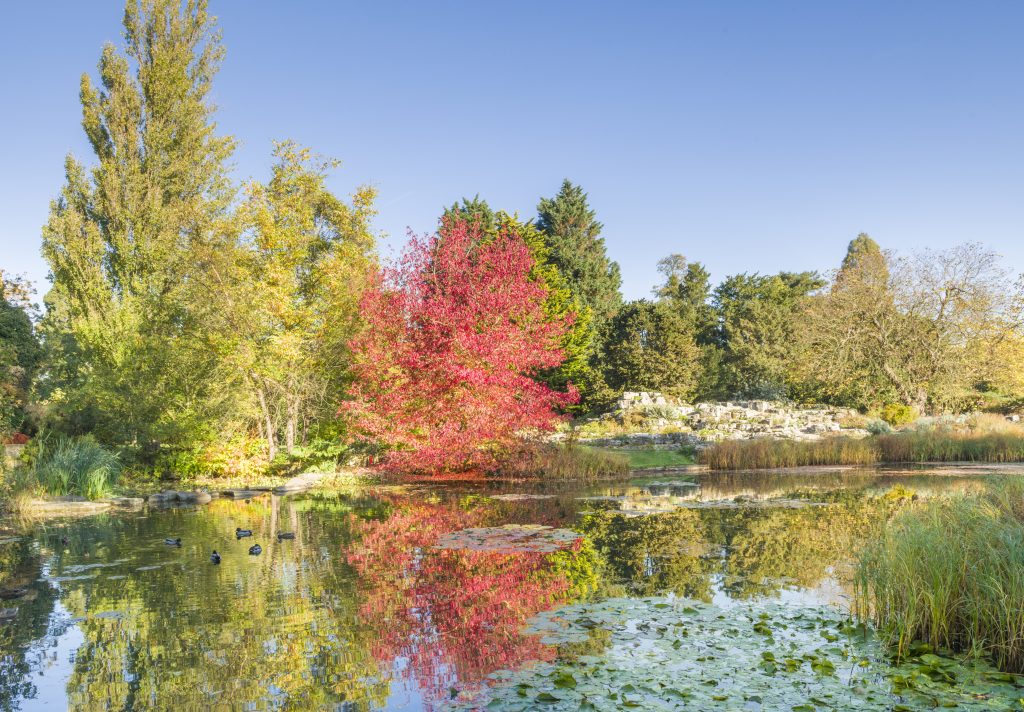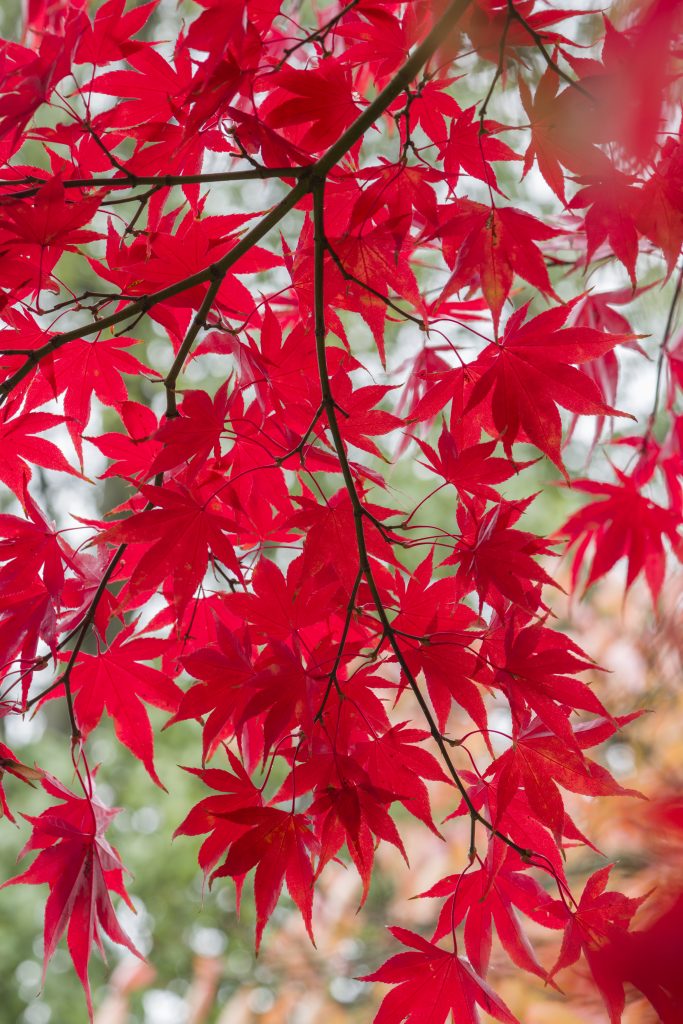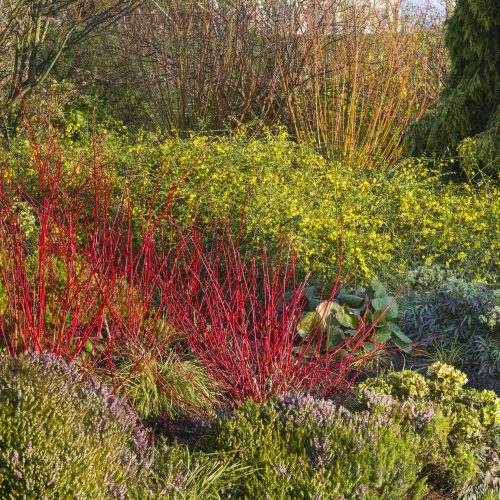She writes:
It is easy to think that the end of summer brings with it the end of colour in the garden, but autumn brings with it a wave of hot, fiery colours to warm the soul as the days shorten.
While long, hot days might be a thing of the past, the gentle light, misty mornings and bold colourings of the season can be as satisfying as the most glorious summer day. Often the subdued light and grey skies bring out the intense colours of late perennials and autumn leaves.
For me, walking through a beech woodland on a crisp carpet of golden yellow and russet-tinged leaves on a windy October day is exhilarating, and unmatched by anything else. Add to this the emergence of fungi in countless shapes and colours, and an abundance of fruits on native trees, autumn really deserves to be more widely celebrated. Yes, days may be shorter and temperatures lower, but there is still much to celebrate in the countryside and in our gardens at this time of year.
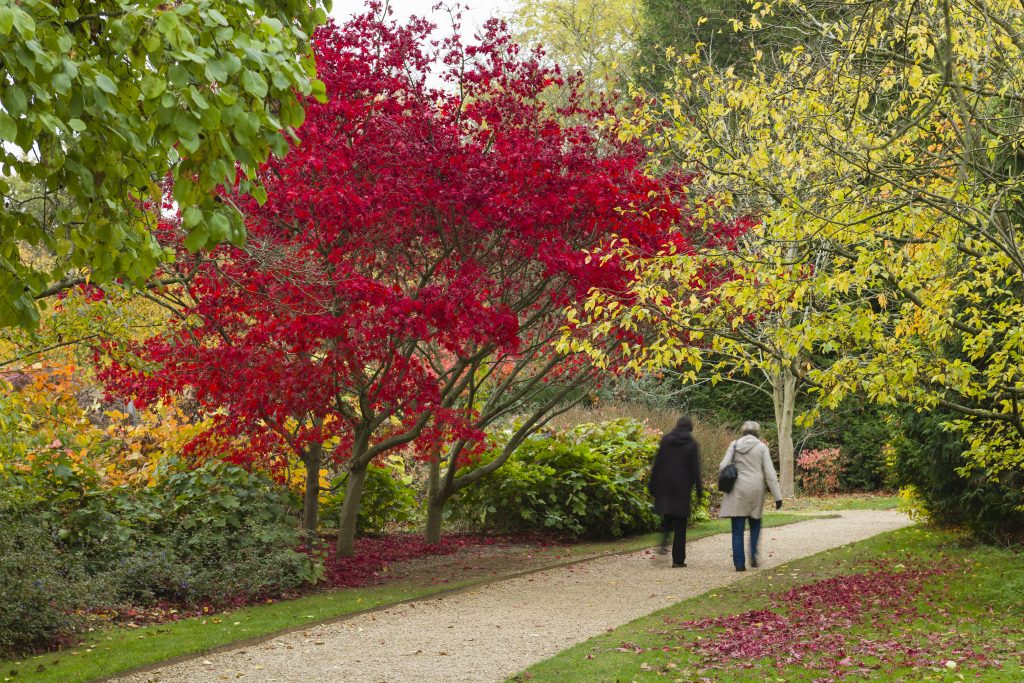
Nature’s performance
So how and why do our trees and plants change colour as autumn approaches?
Autumn colour – the production of intense leaf colour in trees – is a spectacle many gardens strive to achieve, extending the season of interest long after summer fades. As days shorten, photosynthesis slows and so less chlorophyll (the green pigment) is produced in leaves. As this occurs pigments hidden by the green colouring for much of the year, such as yellow and orange carotenoids, and red and purple anthocyanins, are exposed to provide rich colour.
This, coupled with falling night temperatures, produces intense autumn colour. The best autumn colour is produced during an Indian Summer when warm, dry days are followed by cold nights. The timing of autumn colour is highly variable and unpredictable, though here at Cambridge University Botanic Garden a number of trees are reliable in providing autumn colour, including Fagus sylvatica (beech), Liquidambar styraciflua ‘Worplesdon’ (sweet gum ‘Worplesdon’) and Zelkova serrata (Japanese elm).
Bringing autumn home
Seasonal interest though need not be limited to large trees alone, and a range of bulbs, herbaceous perennials, shrubs and small trees can provide valuable autumn interest.
In a small space autumn bulbs such as Cyclamen hederifolium, Nerine bowdenii and Sternbergia lutea (autumn daffodil) can be incorporated in even the smallest space. These all relish a sunny spot and good drainage, and can be effective at the front of a border, or in a mixed planter. Michaelmas daises must be one of the most well-known and valued autumn-flowering plants, producing a range of colours and sizes for inclusion in any garden, and good selections include cerise Aster ‘Andenken an Alma Potschke’, and pale blue Aster x herveyi and Aster x frikartii ‘Mönch’. Other herbaceous plants such as Helianthus ‘Lemon Queen’ and Hylotelephium ‘Herbstfreude’ are reliable for their autumn flowers, and many of the flowering salvias, including Salvia ‘Amistad’ and S. ‘Nachtvlinder’ will produce a succession of flower right up until the first frosts.
If you’re after shrubby autumnal interest many of the spindles, including Euonymus alatus var. apterus, provide an intense flush of scarlet foliage, coupled with interesting red fruits which split to reveal bright orange seeds. Callicarpa bodinieri produces a covering of purple berries during the autumn months, and Strobilanthes wallichii is clothed in tubular purple flowers through autumn.
While many of us discount trees from our gardens there are a number of trees suitable for smaller gardens, and many of them bring the added bonus of striking autumn colour. Favourites among these here at the Botanic Garden are Amelanchier lamarckii (snowy mespilus) and the showstopping Japanese maple Acer palmatum ‘Osakazuki’ whose palmate purple leaves take on brilliant red colourings in autumn. And all of these herbaceous and woody plants grow well in a sunny position in fertile soil and once established require limited attention.
With a little thought your gardening season needn’t be limited just to the height of summer, and you can continue to enjoy a riot of rich colours to brighten even the dullest autumn day.
How to achieve year-round colour
To create year-round interest in the garden choose plants with different seasons of interest. Trees and shrubs provide the structure to your garden, and these can be selected for their flower or foliage, from formal structure, such as hedging, to species which offer striking autumn colour.
Once you have this woody backdrop, you can begin to build up the herbaceous and bulbous layers. By choosing a variety of plants with different shapes and forms you can begin to add interest not only in the peak of summer, but also at the beginning and end of the year. A few snowdrops, for example, bring welcome winter flowers against a backdrop of Lenten roses. These can be interspersed with a range of herbaceous perennials such as Geranium ‘Rozanne’ and Verbena bonariensis, along with grasses including Nasella tenuissima and Calamagrostis x acutiflora ‘Karl Foerster’. This combination provides colour from spring through to autumn, as well as texture and movement throughout the year.
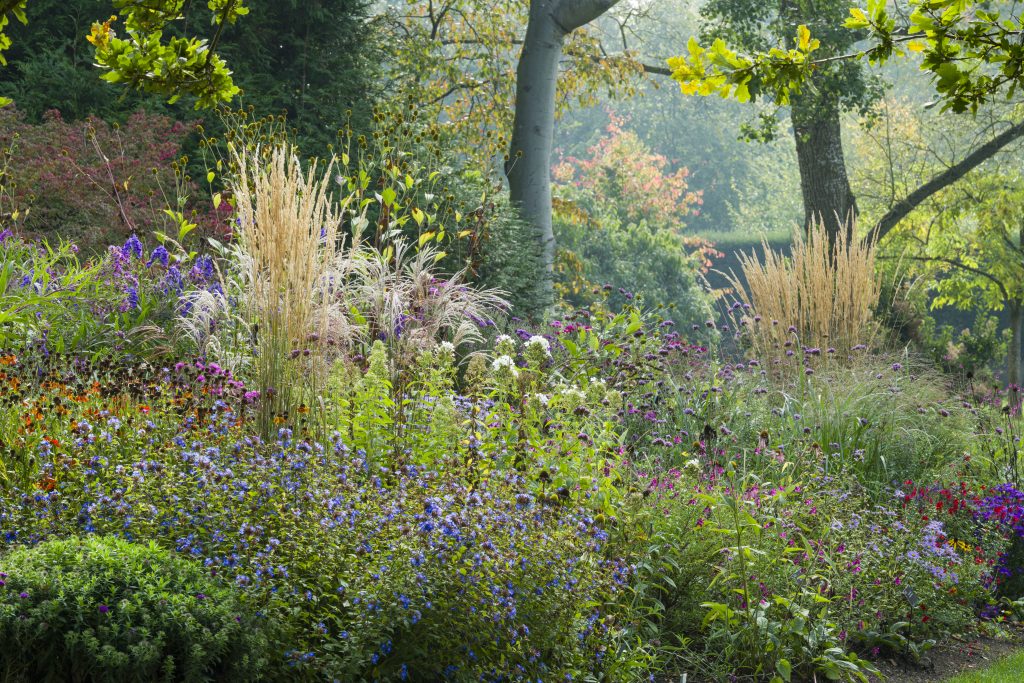
Gardening Jobs for October
Pot up tender plants such as salvias and pelargoniums for overwintering in a greenhouse or conservatory.
Take hardwood cuttings of shrubs.
Plant up heathers, heucheras and winter pansies in pots to provide winter colour.
Plant trees.
Divide herbaceous perennials.
Start tidying the garden for winter by clearing fallen leaves, weeding beds and cutting down perennials – though remember that an unkempt garden can provide a protection for overwintering wildlife.
This piece was originally written for October’s Cambridge Edition magazine (pages 86-89).

